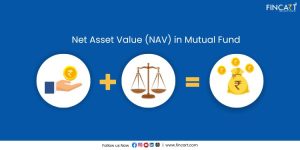When researching mutual funds, you would likely have seen the word AUM pop up here and there. AUM stands for Assets Under Management, which is the total market value of investments that a mutual fund house or manager handles on behalf of their clients. The assets under management in mutual fund investments can tell you about the size and scale of the fund, which in turn can give you insight into its stability, popularity, and sometimes even how well it can perform, making it one of the many critical metrics that you should assess before investing.
Let’s understand AUM in detail and how it influences a fund manager’s strategy and an investor’s decisions.
What Is Assets Under Management (AUM)?
Before we define assets under management, let’s first take a quick look at how a mutual fund works. A mutual fund is an investment vehicle which pools money from a large number of investors. A big fund is created that is managed by professional fund managers and is invested across a variety of assets like stocks, bonds, gold, cash, real estate, and other securities. The total market value of these assets is what we call Assets Under Management. An Asset Management Company (AMC) offers many different mutual fund schemes, and the combined market value of assets across all these schemes makes up the AMC’s total AUM.
So asset under management meaning can be understood as both, the total market value of assets in a specific mutual fund and the combined value across all mutual fund schemes managed by an AMC. For example, SBI’s Bluechip Fund holds around Rs. 53 thousand crores worth of assets, whereas the AMC SBI Mutual Fund oversees a much larger total AUM of over Rs. 9 lakh crores. The higher a fund’s AUM, the more its popularity. It means that investors trust the fund and the manager enough to deliver solid returns.
AUM changes every day due to several factors. Of course, market fluctuations play the biggest role as the value of the assets in the mutual fund rises or falls based on how they perform in the market. If the underlying assets of the fund perform well the AUM rises, and it falls should the assets lose value. Investor contributions also lead to increases in AUM. When new investors buy a fund’s units, more capital is added to the total assets managed.
Similarly, when investors redeem their units the AUM experiences a decrease. Fund managers also rebalance their portfolios, which sometimes impacts AUM depending on the performance of the newly bought assets. Funds generally declare their AUM daily.
Importance of AUM in Mutual Funds
Here are a couple of reasons why assets under management are considered an important metric by investors and fund managers:
Informs investors about a fund’s scale
The AUM indicates how big and popular a fund is. A higher AUM means that over the years, the fund has gained the trust and confidence of investors. Funds with high AUM are also in a good position to attract more investors and keep growing.
Has an impact on the fund’s expense ratio
AUM has a direct impact on a fund’s expense ratio. According to regulations set by SEBI, funds with higher AUMs need to charge a lower expense ratio and vice versa. For example, SEBI mandates that equity funds with AUM less than Rs. 500 crores can charge around 2.25% as the total expense ratio, whereas equity funds with AUM higher than Rs. 50 thousand crores are allowed to charge a lower expense ratio around 1.05% to cover management and operational costs.
How AUM Impacts Mutual Fund Performance
Another crucial aspect of AUM is the effect it has on a fund’s performance. One may think that a higher AUM means the fund will perform well, but that may not necessarily be the case. A high AUM simply means that investors trust the fund house and fund manager to help them earn stable returns and achieve their financial goals. This confidence mainly comes from good performances in the past, which we know does not guarantee future returns.
When a fund’s AUM grows high, the fund manager can even face some challenges in maintaining performance. They may not be able to take sizable positions in smaller companies or less liquid assets without disrupting the market. As the capital grows, fund managers may even need to spread the money across less attractive opportunities just to use the capital.
For example, small-cap funds with high AUM may not be able to invest as efficiently in smaller, high-growth companies because taking large positions could drive up prices and impact the stock’s liquidity. If the fund becomes a majority shareholder in some small companies, it will find it difficult to offload those shares without impacting the stock price significantly.
How AUM Impacts Investment Management Strategy
An AMC’s goal is to increase its AUM as much as possible because the size of the AUM has a direct relationship with the AMC’s potential to earn and grow. And while there are many benefits of a high AUM, there are also some side effects. How large a fund’s assets under management are can shape the manager’s investment strategy. Mutual funds are diversified instruments, meaning investments are spread across a variety of securities and industries.
This reduces risk, but when the AUM is too large, the extra capital deployed by the manager can also dilute returns. In equity funds such as mid-cap funds, managers have limited options for investing that capital effectively without impacting market prices, which can lead to problems in achieving optimal performance or staying aligned with the fund’s goals.
What Investors Should Consider About AUM
An important thing to note about AUM is that a large AUM doesn’t guarantee that the fund will deliver solid returns in the future. While the fund may have performed well in the past, which indeed contributed to its growth in AUM, the size of AUM alone is not a reliable predictor of future results. To analyse a fund under management, you need to consider several other factors as well. These include:
1. Past returns
The fund’s returns over the last 3, 5, and 7 years can give you a good idea of the fund’s historical performance. Be on the lookout for consistency rather than higher returns, as consistent funds are more stable and reliable in the long term.
2. Manager’s track record
Understanding the manager’s investment philosophy and past endeavours can give you insight into their ability to handle different market conditions.
3. Expense ratio
The fund’s expense ratio has an impact on your overall returns, so it’s important to assess how much the fund charges in fees.
4. Risk
The fund’s riskometer can help you get a quick idea of the risk involved. Make sure the risk doesn’t exceed your risk tolerance.
5. Risk-adjusted returns
Look at ratios like the Sharpe Ratio and Treynor Ratio and compare them with other funds within the same category to understand how much return a fund gives you based on the level of risk it takes.
6. Lock-in periods and exit loads
Exit load is charged when you redeem your investment before it matures. A lock-in period can restrict you from withdrawing money completely. If you think you may have a need for cash in the near future, make sure to check whether or not the fund has a mandatory lock-in period.
Conclusion
AUM refers to the total market value of the assets in a mutual fund’s portfolio. The asset under management in mutual fund investments can change based primarily on three factors – shifts in the market value of the underlying securities, investors purchasing units, and investors redeeming units. AUM is crucial in identifying the popularity and stability of a fund or an AMC. A higher AUM means the fund or the fund house is well-reputed and established, and over the years it has earned the confidence and trust of many investors.
AUM on its own is not a reliable indicator of how well a fund can perform in the future, so it must be analysed alongside other elements such as historical returns, expense ratio, and the fund manager’s expertise. You should also make sure that your investment aligns with your risk tolerance, financial goals, and investment horizon.




